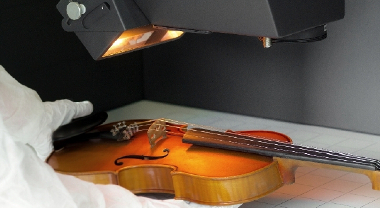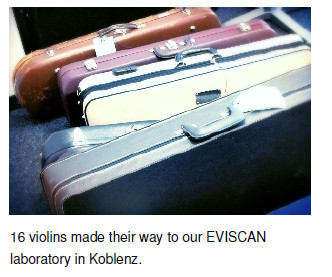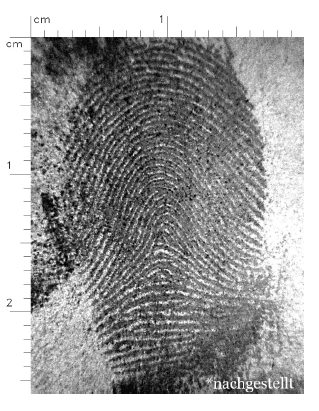Valuable exhibits can be processed without suffering damage and reveal significantly more latent fingerprints than conventional methods
 Once more EVISCAN showed the importance of preserving exhibits in their original condition while hunting for fingerprints. In a burglary case investigated by a German State Criminal Police Office (LKA), 16 expensive violins should be analyzed in order to detect and preserve latent prints.
Once more EVISCAN showed the importance of preserving exhibits in their original condition while hunting for fingerprints. In a burglary case investigated by a German State Criminal Police Office (LKA), 16 expensive violins should be analyzed in order to detect and preserve latent prints.
But the application of chemical agents and adhesives in a forensic laboratory could have irrevocably damaged the fine stringed instruments. Moreover, their sensitive wooden surface made it difficult to secure latent prints by using conventional examination methods. A job for EVISCAN: Due to its unique way of contactless evidence detection EVISCAN aquired high quality results – without any prior treatment and preserving the expensive exhibits in their original condition.


The Results
Recurring patterns such as wood grain usually pose a challenge to forensic experts as they derogate visibility of fingerprints. EVISCAN’s built-in image enhancement software is able to suppress background interference and boost ridge details.
Within two days, 26 fingerprints could be detected and immediately preserved as digital images with 5 of them qualified for dactyloscopic identification. After fully testing the EVISCAN way, a comparative examination in the forensic laboratory with use of adhesive powder and transfer foil followed. Surprisingly, only 12 fingerprints could be secured with one single trace qualifying for dactyloscopic identification. Summing up, EVISCAN not just kept the violins entirely unaffected but revealed better results in a shorter period of time.




